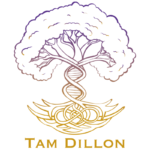There is a widespread belief – subtle, often unspoken – that being conscious, spiritual or self-aware means being calm. That emotional turbulence, strong opinions, or inner unrest somehow contradict awakening. This belief is not only misleading, it’s damaging. Because consciousness is not a mood. It’s not a facial expression. It’s not about staying serene while your life crumbles.
Consciousness is presence. It is the willingness to be with what is – without bypassing, denying or controlling it. That means you can be fully conscious while feeling rage. You can be grounded while grief moves through you. You can be deeply aware in the midst of heartbreak, confusion or fear. Consciousness does not require you to be in a constant state of stillness. It only asks you to be present within your reality, as it is.
The idea that emotional charge is incompatible with clarity is a distortion. Many traditions, especially in Western wellness culture, have glorified calm as the benchmark of healing. But calm isn’t always available. It’s not always the most honest response. And seeking it constantly can become just another way to suppress your truth. There is a difference between regulated and repressed. A regulated nervous system is one that can contain emotion – not deny it. It can hold anger, sorrow, shame and uncertainty without collapsing or lashing out. Repression, on the other hand, keeps those same emotions buried, forcing a mask of peace over an inner storm. That mask may look composed, but it’s brittle. It cannot sustain long-term well-being.
Many people engaged in self-development feel shame when they get overwhelmed, reactive or tearful. They believe it means they’ve failed. But often, those moments are where the real work is happening. Your triggers are openings. They’re invitations to see the places within you that still ache for attention. And if you rush to neutralize them with a tool or practice, you may miss what they’re trying to show you. It’s not your job to feel good all the time. It’s your task to be real. Real with yourself, with your body, with your energy. Sometimes that will be calm. Sometimes it will be chaos. The presence you bring to those states is what makes the difference.
When people use the word consciousness, it can feel lofty – something out there, ethereal, reserved for sages. But in truth, consciousness is deeply embodied. It’s found in the pause before you speak. In the breath you take before reacting. In the way you allow yourself to feel without judgment. In how you choose to respond when the old reaction wants to rise. It’s not about fixing your emotional state -it’s about witnessing it with honesty and compassion. You don’t have to be calm to be clear. Some of the sharpest insights arise in the middle of emotional truth. You don’t have to be neutral to be wise. Sometimes, the fire in you is exactly what reveals what’s out of alignment. You don’t have to be poised to be powerful. You just have to be present.
The work is not about striving for perpetual serenity. It’s about deepening your capacity to stay with whatever arises. That is the path of real growth. That is what builds trust in your own system -not just when things are smooth, but especially when they’re not. So the next time you feel intense emotion, don’t rush to make it go away. Stay with it. Observe it. Let it move without demanding it be pretty or palatable. Ask yourself -not how do I fix this, but how do I meet this?
Consciousness isn’t about being above it all. It’s about being within it all, awake. That’s what this work is for. Not to make you less human, but more fully alive within your humanity. Let calm come when it comes. But don’t measure your growth by how still you appear. Measure it by how present you are – even when your heart is racing, your voice is trembling, your tears are rising. That’s what makes this path sacred. Not the appearance of peace, but the truth of your presence.



